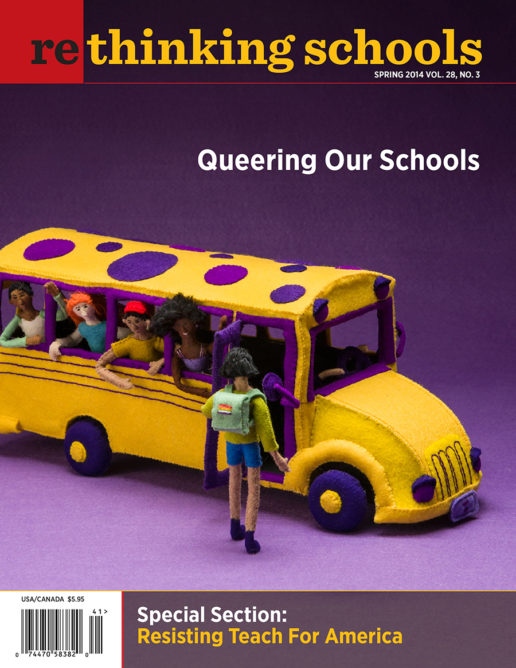Preview of Article:
Mything Mandela
Illustrator: Kadir Nelson
Mandela, the beautifully illustrated children’s book by Kadir Nelson, has been selected as one of the top books on Nelson Mandela by many groups, including Colorlines and Kirkus Reviews. Given Nelson’s talents and strong reputation as a children’s book author and illustrator, Mandela is likely to become a staple in libraries and classrooms.
One look at the cover and it is easy to see why the book is so popular. The illustrations are stunning. Unfortunately, this picture book presents the same mythological image of Mandela that has been the norm on the mainstream news. As journalist Bob Herbert lamented, the news media have reduced Mandela to a “lovable, platitudinous cardboard character,” and the vital role of the anti-apartheid struggle is effectively obscured in the process.
The mythmaking in Mandela begins with the book jacket: “Mandela saw fellow Africans who were poor and powerless. He decided he would work to protect them.” The text repeats this image of Mandela-the-savior: “Africans were poor and powerless. Nelson became a lawyer and defended those who could not defend themselves.” There is no reference to the fact that Mandela joined a movement. As Mandela himself noted: “No single person can liberate a country. You can only liberate a country if you act as a collective.” And Mandela could not have launched the African National Congress (ANC) since that was founded in 1912, six years before he was born.
There is little indication in the book that African resistance to European colonization and white supremacy has a long history, dating back as far as the early 1500s, when African cattle keepers defeated Portuguese invaders. The one example provided of a pre-apartheid struggle paints the Africans as the aggressors: “The people . . . made war on the Europeans who came in search of land and treasure.” Actually, the Europeans weren’t just searching for land—they were taking it. And the Africans did not make war, they defended their land. This is much like descriptions of colonial U.S. history in which settlers were “attacked by unfriendly Indians.”
Nelson continues: “The settlers’ weapons were stronger and breathed fire.” This makes the Africans sound naive and so primitive that they attributed fire-breathing capabilities to the European guns. Unfortunately, these types of stereotypes of Africans are the norm in children’s literature and films, as Brenda Randolph and Elizabeth DeMulder explain in “I Didn’t Know There Were Cities in Africa!” (see Resources).

